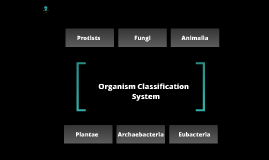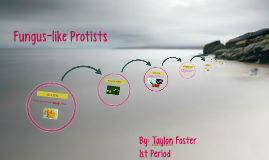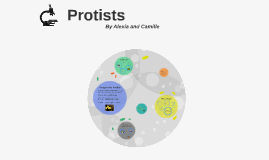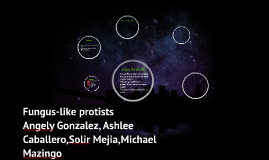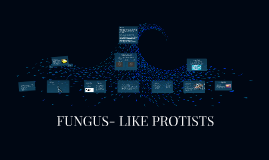Fungus-like Protists
Transcript: Answer Scientific Articles Protists are part of the Eukaryote domain, and they can be parasitic. TRUE Animal-like Protists (Protozoans) A Fungus-like Protists C A C C C -New research from paleobiologist Susannah Porter at University of California -Perfectly circular drill holes that may have been formed by an ancient relation of Vampyrellidae amoebae -Shows earliest evidence of predation in eukaryotes TRUE Protists usually reproduce asexually, but some species can reproduce sexually as well. C Protista have been in existence for around 1.5 billion years! -Resemble fungi -Live on dead organic matter -Extend fungus-like threads into their host's tissues -Releases enzymes to absorb nutrients -3 types of fungus-like protists -Absorb nutrients from other organisms -Some can be parasitic Protist: - A eukaryotic organism - Usually unicellular - Not a fungus, plant, or animal - Autotroph or heterotroph - Asexual or sexual Fun Fact! Works Cited Protists Plasmodial slime moulds Euglena (Example of protist) False: Animal-like protists consume other organisms for food. 6. True or false? -Amobea living in Louisiana tapwater -The deaths of 2 children had occured -The brain is an essentail reproductive environment -Attacks host cell by eating at its contents -Effects the immune system Fungus like protists absorb nutrients from only non-living organisms, and wastes Protists live in almost any environment containing liquid water! A A 5. True or false? -Individual amoeboid cells with one nucleus each -Cell feeds by ingesting tiny bacteria or yeast cells -Releases a chemical that causes them to gather together to form a pseudoplasmodium Water moulds Cellular slime moulds "Tiny Vampires" True or False! TRUE Animal-like protists (protozoans) are animal-like because they mate in similarity to living organisms. By Alexia and Camille -Heterotroph: absorbs nutrients from living organisms, dead organisms, and wastes -Produce spores, just like fungus -Differ from fungi at the cellular level (ex. the cell walls are very different) -3 different types of fungus-like protists FALSE: The third type of fungus-like protist is the water mould, NOT the bacterial mould. Plant-like Protists -Amoebas, ciliates, and flagellates -Consume other organisms for energy -Some species are parasites C Fun Fact! 1. True or false? The three different groups of unicellular protists are the Animal-like protists, Fungus-like protists, and Plant-like protists. The 3 types of fungus-like protists are: plasmodial slime moulds, cellular slime moulds, and bacterial moulds. -Euglenoids, diatoms, dinoflagellates -Develop their own food by photosynthesis -Consumes other organisms while light is unavailable -Live as symbionts within other organisms (larger organism is the host) -Visible to unaided eye - looks like a tiny slug -Creeps over decaying plant material -Contains many nuclei -Feed by engulfing small particles into their cytoplasm Characteristics of Protists The 3 Types of Fungus-like Protists Fungus-like Protists Did you know? 4. True or false? There are over 60,000 different types of protists! C FALSE: Absorbs nutrients also from living organisms Cohen, J. (2016, May 26). Tiny vampires. Retrieved June 06, 2016, from http://universityofcalifornia.edu/news/tiny-vampires Dunlop, J. et al. (2010). McGraw-Hill Ryerson Biology 11. Toronto: McGraw-Hill Ryerson. Gonzalez, R. (2012). Can we stop the spread of brain- eating amoebas that killed two children in Minnesota? Retrieved June 07, 2016, from http://io9.gizmodo.com/5935019/minnesota-children-are-dying-from-brain-eating-amoeba Introduction "Brain Eating Protists (Naegleria Fowleri) Populating Lakes Everywhere" A 2. True of false? 3. True or false?








